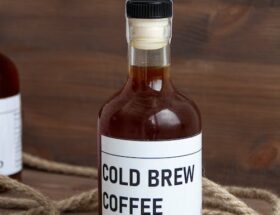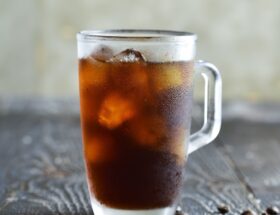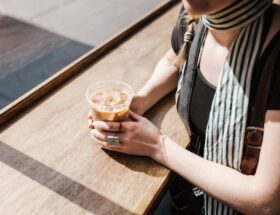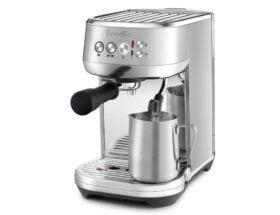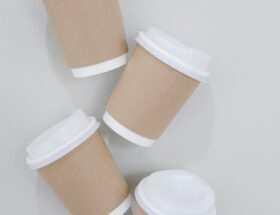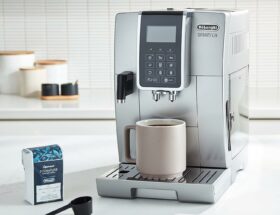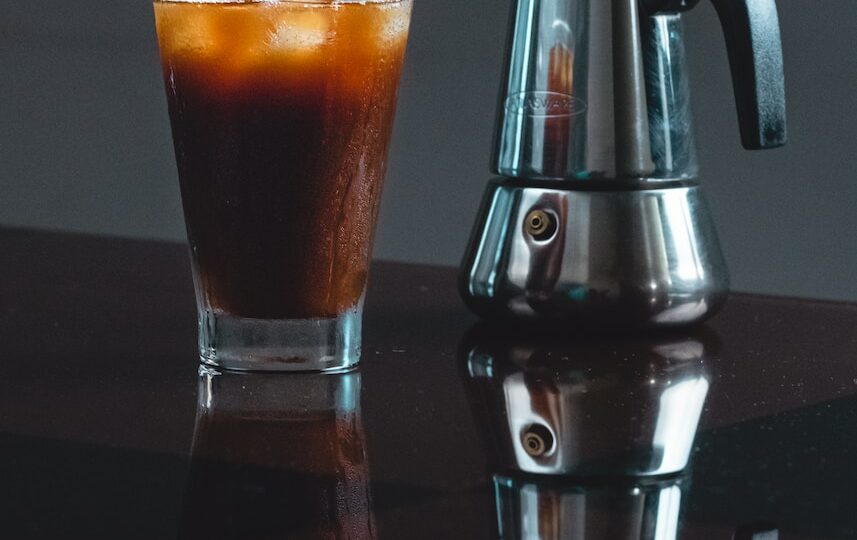
Unlocking the Perfect Brew: What Coffee for Cold Brew?
Wake up, coffee lovers! As the summer heat takes over, let’s dive into the refreshing world of cold brew coffee. Are you wondering which coffee beans make the perfect cold brew? Well, it really boils down to your personal taste preference. Whether you prefer a fruity, chocolatey, or robust flavor, join us on this stimulating caffeine journey as we explore the best coffee beans to use for cold brew. Let’s boldly step into the cool side of our beloved brew! From bean types to roast levels, we’ll guide you in brewing an indulgent, full-bodied glass of chilly goodness. Ready? Let’s get brewing!
Table of Contents
Choosing the Perfect Coffee for Cold Brew
Are you seeking that quintessential silky, rich, and well-rounded cold brew coffee? To unlock the full potential of your brew, choosing the right coffee bean is crucial. Contrary to common perception, cold brewing isn’t exclusive to any particular type of bean.
Decoding the Flavor Profile
When making a cold brew, the flavor depends largely on your choice of coffee bean. Cold brew accentuates the intricate flavors of the bean, producing a cup of coffee that’s naturally sweeter and less acidic than its hot brewed counterparts.
Broadly Speaking: Arabica or Robusta?
Generally, Arabica beans are the go-to for many coffee enthusiasts due to their subtle flavors and low acidity. On the other hand, Robusta beans, known for their bold and intense profile, can add an adventurous kick to your cold brew.
Roast Level: Light or Dark?
While traditionally, a medium to dark roast is preferred for cold brew, don’t shy away from experimenting with light roast beans. They can introduce exquisite fruity and floral notes to your coffee, imbuing a delightful complexity to your brew.
Coarse Ground for the Perfect Cold Brew
Lastly, it all comes down to the grind. For cold brew, stick to coarsely ground beans. It ensures a smooth infusion process, preventing over-extraction and fostering a balanced, exceptionally flavorful brew to be enjoyed hot or cold!
Discovering the Ideal Coffee for Cold Brew
Embarking on the journey to the perfect cup of cold brew involves understanding your personal coffee preferences, experimenting with various elements, and understanding the nuances of cold brewing. Choosing the best coffee for cold brew depends on several factors, from roast levels, origin, grind size, and brewing methodology. The key is to be adventurous, trying different beans, experimenting with brewing variables until you pinpoint your unique taste.
Finding the Right Balance: Roast Levels Count
One of the initial decisions to make when choosing your cold brew beans is the roast level. While the cold brewing process lends itself well to medium to dark roast coffees, accompany a robust, chocolatey, caramel, or nutty flavor profile, don’t rule out light roasts entirely. While these tend to hold more delicate flavors that can be subdued by the cold brewing process, some coffee aficionados enjoy the subtler nuances they contribute to the brew.
Diversity in Origin: Exploring Single-Origin Coffees and Blends
Another aspect worth exploring is the coffee’s origin. Single-origin beans from Ethiopia, Colombia, Brazil, or Indonesia come with distinctive flavor profiles, adding complexity to your cold brew. On the other hand, blends can offer a more predictable, balanced flavor profile, if consistency is your preference.
The Grind: Coarseness Makes the Brew
The magic that is cold brew coffee also hinges largely on the grind size. A coarse grind is generally more favorable, allowing a slower and more even extraction that teases out the inherent coffee flavors and prevents bitterness associated with over-extraction. A finer grind may result in an unnecessarily heavy and bitter brew. The grind truly sets the stage for your delightful cold brew experience.
| Coffee | Price | Flavor |
|---|---|---|
| Stumptown Chocolate Cold Brew Coffee with OATLY | $5.00 per 11 oz carton | Chocolatey, nutty, and caramel |
| Coffee Variety Coffee High Hopes Blend | $15.00 per 300g bag or $57.00 per 5lb bag | Chocolate ganache, date, cherry cordial |
| Stone Street Cold Brew Reserve Blend | $17.25 per 1lb bag or $32.75 per 2lb bag or $73.13 per 5lb bag | Bold and smooth, chocolate and hazelnut |
| Golden Ratio Coffee | $14.99 per bag of 7 pouches | Smooth and balanced, low acid |
| Jot Ultra Coffee Concentrate | $19.50 per 6.8 oz bottle | Intense, smooth, and versatile |
| Trader Joe’s Instant Cold Brew | $20.30 per 3.5 oz jar | Smooth, rich, and slightly sweet |
| Wandering Bear Cold Brew On Tap | $35.99 per 96 oz box | Smooth, strong, and slightly sweet |
| Minor Figures Nitro Black Coffee | $11.70 per 6.8 oz can | Creamy, smooth, and refreshing |
Method Matters: Immersion, Drip, or Concentrate
Brewing Techniques
Different cold brewing techniques can also result in various taste profiles. Immersion, a common go-to method, involves immersing coffee grounds in water, allowing it to steep for 12-24 hours before it gets filtered. While this method is easy, other techniques such as drip and concentrate each offer a unique flavor and strength.
The drip technique involves cold water gradually dripping over the coffee grounds, demanding several hours but adding a different dimension to the brew. A concentrate brew uses a higher coffee-to-water ratio, culminating in a robust brew that can be diluted to preference. The key here, once again, is to experiment with these methods as the same coffee can result in quite different brews.
- Immersion: This is the simplest and most common method of making cold brew coffee. It involves soaking coarsely ground coffee in cold or room-temperature water for 12 to 24 hours, depending on the desired strength and flavor. The coffee grounds are then filtered out, leaving a smooth and mellow cold brew that can be enjoyed as it is or diluted with water or milk.
- Drip: This is a more sophisticated and precise method of making cold brew coffee. It involves dripping cold water over a bed of coffee grounds for several hours, using a special device or apparatus. The water slowly extracts the coffee oils and flavors, resulting in a clear and bright cold brew that has more acidity and complexity than immersion.
- Concentrate: This is a method that uses a higher ratio of coffee to water to produce a stronger and more concentrated cold brew. It can be made using either immersion or drip methods, but it requires less water and more coffee. The concentrate can be stored for longer and diluted with water or milk before drinking.
I hope this helps you understand the differences between the three cold brew methods. 😊
Referenced Blogs for Further Reads
If you are eager to immerse yourself further in the world of cold brew coffee, I have rounded up a selection of informative blogs that I found incredibly enlightening. Don’t forget to check them out:
- How to make Cold Brew Coffee (The Easy Way!)
- How to make Cold Brew Coffee at Home: Easy Steps
- Is Cold Brew Stronger Than Regular Coffee?
- What Is Nitro Coffee? A Trendy Nitrogen-Infused Cold Brew
Keep brewing, keep experimenting, and most importantly, keep enjoying the wonderful journey that coffee takes you on. Happy reading and brewing!
Wrap Up
For cold brew coffee, my top recommendation would always be medium to dark roast beans. The reason being, the cold brew process is a long and slow one, and dark roast beans hold up really well to this brewing method, resulting in a smooth, rich, and chocolatey flavor. Medium roast can also work fine if you prefer a brew with a more balanced flavor.
Some specific coffee varieties that I have enjoyed for cold brewing include the Sumatran dark roasts, Ethiopian Yirgacheffe, and the Guatemalan medium roast. However, remember, the best coffee for cold brew is truly subjective and all about personal preference. So don’t hesitate to experiment with different types of beans and find which one suits your palate the best.
To conclude, nothing beats a glass of cold brew coffee, especially during hot summer days – it’s refreshing, packed with flavors, and incredibly delightful. Make sure to use freshly roasted coffee and grind the beans coarse for the perfect brew. So, what’s brewing at your end? Share your most loved coffee beans for cold brewing in the comments section. Let’s connect over a love for coffee!

